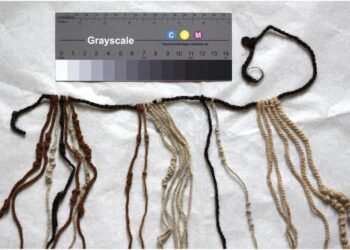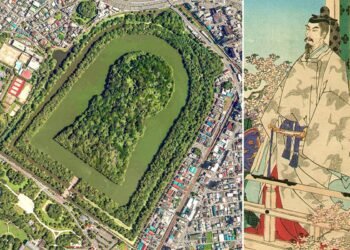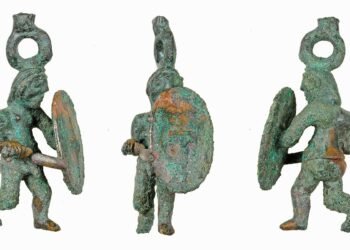Conclusions drawn by a team of archaeologists, spearheaded by Dr. Michael Brown from Heidelberg University’s Institute of Prehistory, Protohistory, and Near-Eastern Archaeology, shed light on the fortress at Rabana-Merquly.

Collaborating with Iraqi counterparts, Dr. Brown and his team delved into the remains of this site, unraveling essential insights into the settlement structures and history of the Parthians, a civilization relatively underexplored despite historical acknowledgment as a significant power.
Situated on the southwest slopes of Mt. Piramagrun in the Zagros Mountains, Rabana-Merquly’s stone fortress, spanning nearly four kilometers, also encompasses two smaller settlements integral to its identity.
Due to its elevated position on the mountain, drone technology facilitated the mapping of this archaeological site, enabling the international research team to conduct thorough on-site excavations from 2009 to the most recent endeavors between 2019 and 2022.
Surviving structures, indicative of military usage, include the remnants of rectangular buildings, possibly barracks. Noteworthy findings comprise a religious complex, potentially dedicated to the Zoroastrian Iranian goddess Anahita.
The rock reliefs at the fortress entrance hold particular significance, coupled with its strategic location in the catchment area of the Lower Zab River, known in antiquity as Kapros.
There is a compelling suggestion that Rabana-Merquly may be the elusive Natounia. Previously documented only on a few coins dating back to the first century BCE, the royal city of Natounia or Natounissarokerta might find its archaeological manifestation in Rabana-Merquly.

Dr. Brown speculates that the place name Natounissarokerta, associated with the Adiabene royal dynasty founder Natounissar and the Parthian term for moat or fortification, aligns with the features observed at Rabana-Merquly.
The wall reliefs at the fortress entrance, resembling depictions found in Hatra, around 230 kilometers away, hint at the likeness of the city’s founder—either Natounissar or a direct descendant.
Positioned on the eastern border of Adiabene, governed by a local dynasty under Parthian influence, Rabana-Merquly might have served multiple purposes, including trade facilitation, diplomatic relations, and military strategies.
Dr. Brown emphasizes the considerable governmental effort evident in planning, building, and maintaining such a sizable fortress. Ongoing research at Rabana-Merquly is supported by the German Research Foundation as part of priority program 2176, “The Iranian Highlands: Resilience and Integration of Premodern Societies.”
This initiative aims to explore Parthian settlements and society in the Zagros highlands on both sides of the Iran-Iraq border. The results of Heidelberg’s investigations have been published in the journal Antiquity.
More information: Brown, M., Raheem, K., & Abdullah, H. (2022). Rabana-Merquly: A fortress in the kingdom of Adiabene in the Zagros Mountains. Antiquity, 1-17. doi:10.15184/aqy.2022.74























